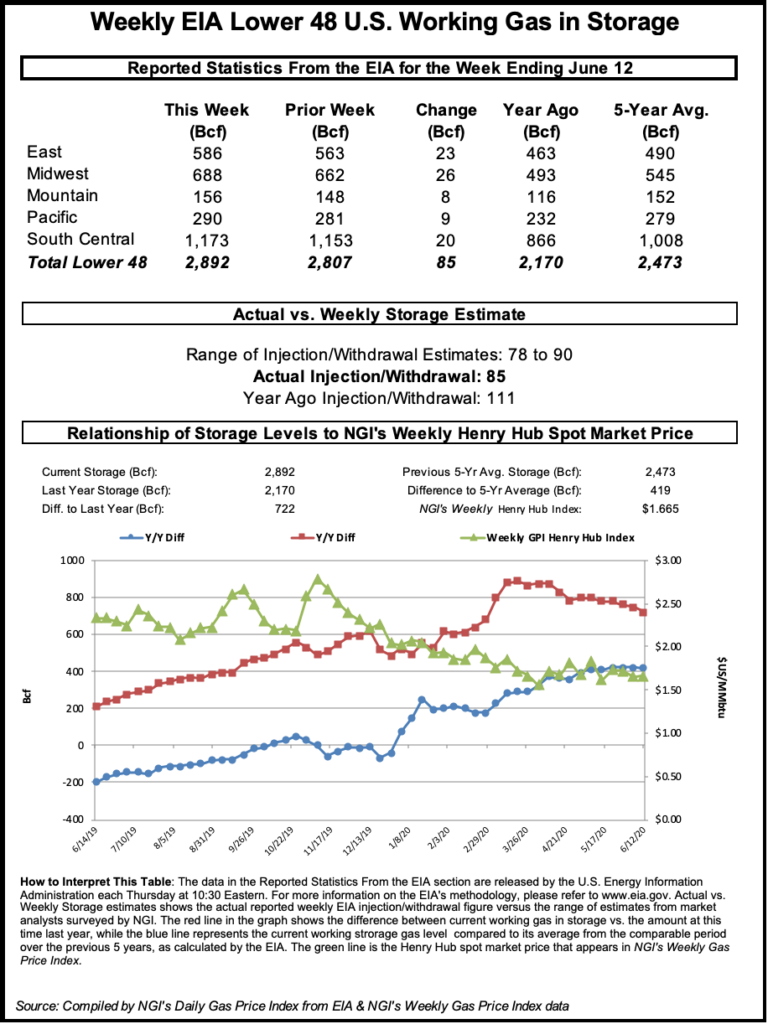July Natural Gas Futures Down Slightly Following In-Line Storage Injection
The U.S. Energy Information Administration (EIA) reported an injection of 85 Bcf natural gas storage for the week ending June 12, a reading that was in line with the averages of major polls.

Nymex natural gas futures were down early Thursday but recovered some ground after EIA posted the relatively bullish print.
Ahead of the report, the July contract was down 1.3 cents at $1.625/MMBtu. The prompt month recovered some ground to around $1.629 when the data was released. By 11 a.m. ET, the July contract was trading at $1.634, down four-tenths of a cent from Wednesday’s close.
The latest build marked a decline from the 93 Bcf injection a week earlier. It compared with a build of 111 bcf during the same week a year earlier and a five-year average build for the week of 87 Bcf.
Ahead of the report, a Bloomberg poll found injection estimates ranging from 78 Bcf to 87 Bcf, with a median of 84 Bcf. A Wall Street Journal survey produced an average of 85 Bcf, in line with results of a Reuters survey. NGI estimated an 86 Bcf build.
The latest injection suggests that supply and demand are gradually aligning, analysts said, as businesses reopen amid the coronavirus pandemic and economic activity starts to gather momentum, driving energy demand.
Bespoke Weather Services said the build continued “the trend of tighter supply/demand balances,” though “this does little to solve the question centered around possible containment in the fall,” given ongoing uncertainty about the pandemic’s lasting impacts and weak global demand for U.S. exports.
Summer weather also helped. “Heat is soaking up the gas,” said one participant on The Desk’s online energy platform Enelyst.
The latest build lifted inventories to 2,892 Bcf, compared with the year-earlier level of 2,170 Bcf and the five-year average of 2,473 Bcf.
By region, the Midwest build was 26 Bcf, with the East at 23 Bcf, according to EIA. The South Central build of 20 Bcf included an 18 Bcf injection into nonsalt facilities and a 1 Bcf build in salts. Pacific inventory grew by 9 Bcf, with Mountain inventories up by 8 Bcf.
© 2024 Natural Gas Intelligence. All rights reserved.
ISSN © 1532-1231 | ISSN © 2577-9877 |
